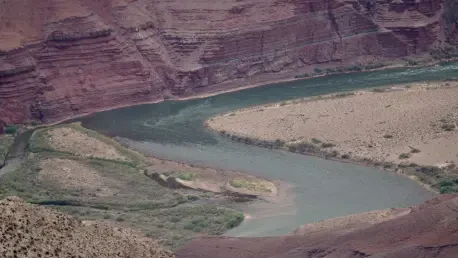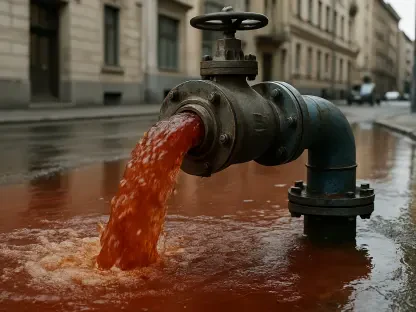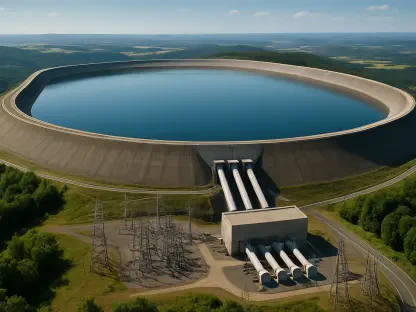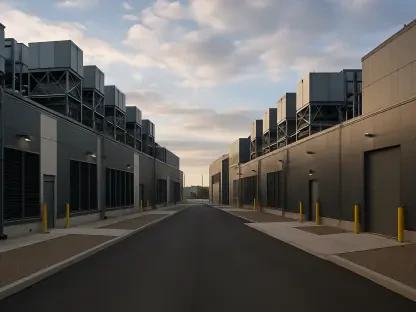In an ever-evolving climate, managing water resources has never been more crucial. Today, we’re diving into the complexities of Colorado River water management with Christopher Hailstone, a renowned expert in energy management and utilities. With decades of experience, Christopher offers invaluable insights into short-term and long-term water management strategies.
Can you explain the significance of the recently negotiated 18 short-term System Conservation Implementation agreements?
These agreements mark a significant step forward in addressing the prolonged drought plaguing the Colorado River Basin. By working collaboratively with water entitlement holders in regions like Arizona and California, we’re able to implement immediate conservation measures. This not only aids in the preservation of critical water levels but also exemplifies a proactive approach to water management amid challenging conditions.
Who are the main participants involved in these agreements?
The agreements involve a diverse group of stakeholders, including tribal, municipal, and agricultural water users in the Lower Colorado River Basin. The collaborative effort also extends to the Department of the Interior and the Bureau of Reclamation, working alongside the governors of all seven Colorado River Basin states and tribal nations.
What role do the tribal nations play in the Colorado River Basin water management plan?
Tribal nations are essential partners in these agreements. Not only are they key beneficiaries of the water resources, but their historical stewardship of the land provides invaluable insights into sustainable practices. Their involvement ensures that conservation efforts respect traditional land uses while promoting holistic water management.
How much additional water savings is expected from the extension of these agreements through 2026?
The extension aims to conserve an additional 321,000 acre-feet of water, which is critical for elevating Lake Mead’s storage capacity. This effort is a testament to the impact of systematic conservation strategies and the collective dedication to safeguarding our water resources for future generations.
Could you elaborate on the impact that saving 321,000 acre-feet of water will have on Lake Mead’s reservoir elevation?
Saving 321,000 acre-feet translates to roughly five feet in increased elevation for Lake Mead. This is significant, as maintaining reservoir levels is vital not only for water supply stability but also for securing the lake’s capacity to generate hydropower, which millions depend on across the region.
In what ways do these short-term agreements benefit tribes, cities, and farmers in the Lower Colorado River Basin?
These agreements are designed to provide financial support to various water users in exchange for conserving water. This funding allows tribes, cities, and farmers to implement water-saving practices without bearing the full financial burden. It paves the way for sustainable use while also offering a buffer during critical development periods, such as the creation of Post-2026 Operating Guidelines.
How are the funds for water savings distributed among the different water users?
The funds are allocated based on agreements that specify the amount of water conserved by each stakeholder. By ensuring an equitable distribution that reflects the contribution of each participant, the program incentivizes all parties to actively partake in conservation efforts.
What challenges is the Bureau of Reclamation facing in forming a water management plan for the Colorado River?
One of the main challenges is the competing demands from various sectors for limited water resources. Balancing these needs while planning for an uncertain climate future requires precise negotiation, innovative solutions, and, more importantly, cooperation from all involved parties to ensure that everyone’s needs are met sustainably.
How does the current drought situation amplify the need for these agreements?
The ongoing drought underscores the urgency of these agreements. As water levels continue to decline due to persistent dryness, having formal, recognized agreements in place ensures that all stakeholders are aligned towards a common goal of conservation and resource efficiency, making it possible to mitigate some of the adverse impacts of the drought.
What specific actions is the Trump administration taking to address drought response in the Colorado River System?
The administration is focusing on strengthening drought responses by prioritizing collaborative conservation efforts and investing in infrastructure that supports more resilient water systems. This involves working closely with communities to safeguard their interests while maximizing the efficiency of existing water resources.
How does the Colorado River’s hydropower resource influence these water management decisions?
Hydropower generation is a crucial consideration in these management decisions. The river’s ability to produce energy hinges on maintaining adequate water levels, which necessitates a dual focus on effective water use and conservation measures. This intertwining of water supply and energy production ensures that resource management strategies accommodate both needs.
Why is it important to focus on both near-term and long-term water supply solutions?
Focusing on near-term solutions allows us to address immediate challenges, such as those posed by drought conditions, while long-term strategies are crucial for adapting to climate variability and future water demands. This dual approach ensures that efforts today lay the groundwork for a sustainable tomorrow.
Could you provide more details on the Post-2026 Colorado River Operating Guidelines?
Though still in development, these guidelines aim to establish a framework for managing Colorado River water deliveries and use beyond 2026. It’s an opportunity to incorporate lessons learned from current conservation efforts into a strategic plan that ensures continued resource availability under changing environmental conditions.
What is the overall strategy of Reclamation to ensure the future viability of the Colorado River water supplies?
Reclamation’s strategy includes fostering collaboration across states, tribal nations, and water users to create adaptable, resilient practices. Protecting water resources involves scientific research, policy development, and infrastructure improvements to bolster the long-term viability of the river and its supplies.
How is Reclamation collaborating with Lower Basin states to further enhance water conservation efforts?
Reclamation is working directly with Lower Basin states to facilitate the implementation of water conservation projects and promote sustainable practices. This includes technical assistance and funding opportunities to help states innovate and reduce their water footprint, ensuring a sustainable future for the river.
Are there any new or upcoming projects that will focus on additional water conservation agreements?
Yes, there are ongoing discussions about expanding conservation measures and entering into new agreements. These projects aim to build on the current framework, exploring innovative methods and technologies to further enhance conservation across the basin.
Do you have any advice for our readers?
Staying informed about water conservation efforts and understanding local impacts is crucial. Everyone has a role to play, and individual actions can collectively drive significant change. Whether it’s reducing daily water use or supporting conservation policies, participation from all levels is vital for sustainable water management.









